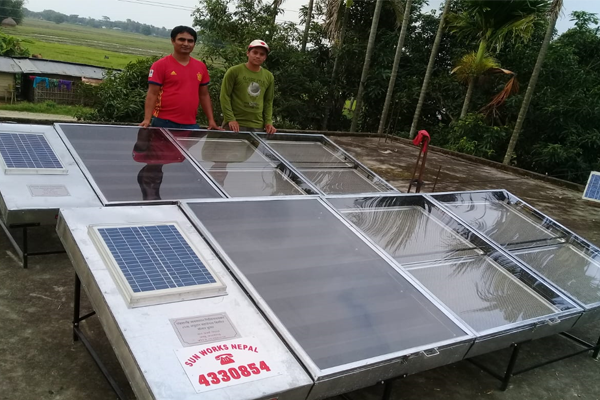One of the oldest uses of solar energy has been the drying and preservation of agricultural surpluses. The methods used are simple and often crude but reasonably effective. Basically, crops are spread on the ground or platforms, often with no pre‐treatment, and are turned regularly until sufficiently dried so that they can be stored for later consumption. Generally little capital is required on the expenditure of equipment but the process is labor intensive. There is probably no accurate estimate of the vast amounts of material dried using these traditional techniques. Suffice it to say it is a widespread technology practiced in almost every country of the globe and at nearly every latitude. Diverse products such as fruit, vegetables, cereals and grains, skins, hides, meat and fish and tobacco are dried using these simple techniques.
These technologies have originated in many of the developing countries so there is no major social problem in their acceptance or in the use by the local populations of dehydrated foods for consumption. There are several technical problems, however, with the process. They are:
• Intermittent, affected by cloudiness and rain
• Subject to insect infestation
• Affected by high levels of dust and atmospheric pollution
• Affected by the intrusion from animals and man
Sun Works Nepal has designed Solar Dryer which can dry agricultural products more effectively and hygienically. Basically two designs are available: i) Indirect Drying type and
ii) Direct Drying type.
Direct type system can be used for food which needs high temperature for drying such as meat, spices with high moisture content. The indirect type can also be used for the purpose but it is mainly used for products that should not be dried in direct sunlight such as apple, potato etc. The advantages of Sun Works Nepal manufactured Solar Dryer are:
• The Solar Energy is trapped in a black painted box thus resulting in a higher temperature around the food items. This decreases the drying time.
• Reduction in drying time and exposure of food to solar radiation help conserve nutritional value of food.
• The food being dried is free from dust and disturbances from animals as well as birds.
• Rain will not slow down the drying process as you do not have to worry about the food being wet.
These technologies have originated in many of the developing countries so there is no major social problem in their acceptance or in the use by the local populations of dehydrated foods for consumption. There are several technical problems, however, with the process. They are:
• Intermittent, affected by cloudiness and rain
• Subject to insect infestation
• Affected by high levels of dust and atmospheric pollution
• Affected by the intrusion from animals and man
Sun Works Nepal has designed Solar Dryer which can dry agricultural products more effectively and hygienically. Basically two designs are available: i) Indirect Drying type and
ii) Direct Drying type.
Direct type system can be used for food which needs high temperature for drying such as meat, spices with high moisture content. The indirect type can also be used for the purpose but it is mainly used for products that should not be dried in direct sunlight such as apple, potato etc. The advantages of Sun Works Nepal manufactured Solar Dryer are:
• The Solar Energy is trapped in a black painted box thus resulting in a higher temperature around the food items. This decreases the drying time.
• Reduction in drying time and exposure of food to solar radiation help conserve nutritional value of food.
• The food being dried is free from dust and disturbances from animals as well as birds.
• Rain will not slow down the drying process as you do not have to worry about the food being wet.



